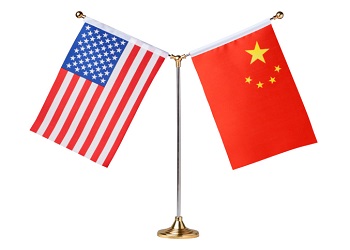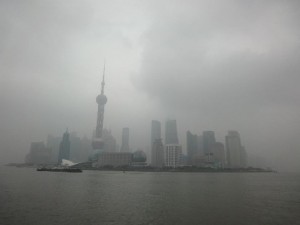
Ambition on both sides in US-China Climate Deal
On Wednesday, November 12 in Beijing, President Obama and his Chinese counterpart Xi Jinping announced a series of agreements at a surprisingly fruitful APEC summit. The US and China came to agreements on issues as diverse as military relations, trade, investment, visas, and a range of other issues. Certainly, the Chinese are not acting like they’re dealing with a U.S. President hobbling into a lame-duck period.
The biggest agreement, however, comes in the area where President Obama still has a great amount of power, both domestically and internationally, to take action: climate change. This is also an area where action by the Chinese government both has meaning for a domestic constituency and among the international community. While observers had expected some sort of deal on climate change, the scope and ambition of the deal were a surprise. Last year, I had written that “U.S. – China Agreement on Climate Shows Promise” – and with this announcement, we see that the promise is on its way to bearing fruit.
Of course, we can only judge the effectiveness of any deal on climate change over a long horizon. This deal does appear, though, to put both the US and China – and the rest of the world with them – on a track to beginning to actually meet the challenges of climate change.
The Terms of the Agreement: Ambition on Both Sides
Under the deal, the United States will cut emissions 26 to 28 percent below 2005 levels by 2025, while China agrees that its emissions will hit a peak and begin declining by 2030 at the latest, while also increasing its share of non-fossil energy to 20 percent in that same period. The White House claims its emissions cuts can be met “under existing law” (so, no need for Congressional action) and China, meanwhile, will deploy up to 1,000 gigawatts (a terawatt) of new nuclear, wind, solar and other zero-emissions generation to meet its goal. The targets are there, and so are the means.
Next year, leaders from around the world will gather in Paris to negotiate and (hopefully) agree to a deal that will stake out how the world will agree to reduce its emissions and address the challenges of climate change. Unlike the perceived failures of 2009 Copenhagen Summit, this deal, combined with the announcement from the European Union last month, shows that national governments are beginning to lay the groundwork for success. In 2009, few national leaders had prepared for the summit, and little action was taken before the event. Next year, it is clear that leaders will come to Paris with pledges in hand and a way forward to act.
Reasons for Chinese Action on Climate Change
 Many people I’ve talked to are skeptical that China would ever act to reduce their emissions. This has been a standard talking point for US inaction for decades. To those who haven’t been paying attention, it seems a mystery as to why the Chinese government would act on climate change. However, the Chinese government now sees that climate action is in its self-interest, and this diplomacy shows why.
Many people I’ve talked to are skeptical that China would ever act to reduce their emissions. This has been a standard talking point for US inaction for decades. To those who haven’t been paying attention, it seems a mystery as to why the Chinese government would act on climate change. However, the Chinese government now sees that climate action is in its self-interest, and this diplomacy shows why.
First, even though greenhouse gas emissions and local pollutants that cause smog are not the same, many of the actions to reduce local pollution also reduce greenhouse gas emissions. Since the widespread “smog emergencies” of the last few years, the Chinese government has realized it has a problem. Reports state that the largest source of protest in mainland China against the government is about environmental problems. This deal will give the government a target to clean-up the air – and allow it push through those with even skeptical stakeholders.
Second, in one of the great turnarounds of diplomacy over the past decade, the Chinese leadership realized that they could not afford to continue to come to international forums like the G20 or the UN without a climate policy. Shortly after they took over the world’s largest emitter in 2007, their rhetoric about only being a developing nation, and therefore should never be subject to emissions caps began to ring hollow. When, this year, they passed Europe in terms of per capita emissions, it became especially hollow. The least developed countries noticed – and began to call for meaningful action from both developed nations and countries like China. The Chinese take their role of leadership in the developing world seriously – and knew that if they aspired to a role in the broader world, they needed a coherent message on climate change.
Finally, some high-level national security leaders in China are beginning to understand that unmitigated climate change could make the country essentially ungovernable. Outside of the Arctic, nowhere else in the world is warming as fast as the Tibetan Plateau, and that has broad implication on the glaciers and the rivers that they supply. On their coast, megacities like Shanghai, Guangzhou, and Qingdao could be threatened by the mixture of sea level rise and extreme weather events. Throughout history, Chinese governments have been brought down most often by famine and agricultural failures. Climate change threatens their domestic wheat and rice production – threatening just such an event. In these cases, action by the US and China reduces the risk of these events.
While it will be very important that any deal reached on climate change with the Chinese be measurable, reportable, and verifiable, this deal should be applauded. It is based upon a rational change in position by the Chinese government, and it will ensure that actions taken by the U.S. do not simply result in a net-gain for Chinese business. As Secretary of State Kerry said in an op-ed in the New York Times, this is a “Historic Agreement With China on Climate Change.” It deserves bipartisan support.





